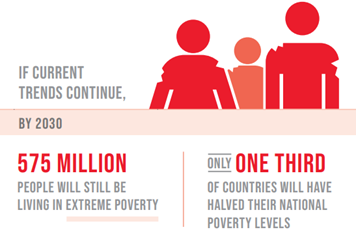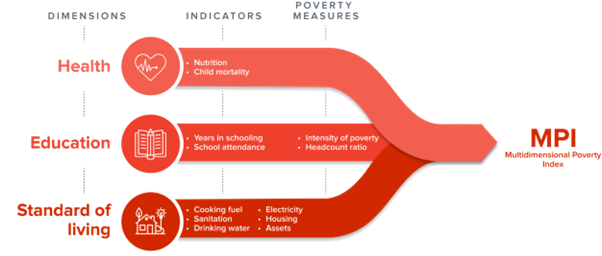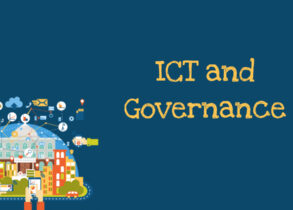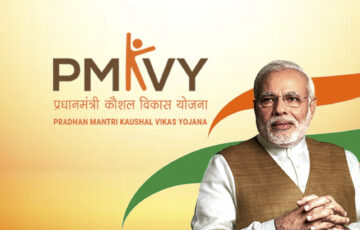Hunger and Poverty: Challenges for good governance in India
Relevance
- GS Paper 2 Issues relating to poverty and hunger.
- Tags: #Hunger #Poverty #goodgovernance #UPSC #governance.
What is Hunger and Poverty?
Hunger refers to a severe lack of sufficient food and nourishment needed for individuals to maintain their health and well-being. It results in malnutrition, starvation, and food insecurity, impacting physical and cognitive development, and is a global challenge affecting millions.
Hunger remains a global scourge, claiming more lives than any other cause. By embracing sustainable agriculture, integrating modern technologies, and establishing equitable distribution systems, we can address this crisis and ensure food security for the entire global population.
Poverty is a socio-economic condition characterized by limited access to essential resources such as income, education, healthcare, and shelter. It entails an inability to meet basic needs, perpetuating inequality, and hindering opportunities for individuals to lead dignified lives.
Eradicating poverty transcends mere charity; it embodies an essential pursuit of justice and holds the key to unlocking humanity’s vast potential. With nearly half of the world’s population still living in poverty, countless lives are lost daily due to the lack of basic necessities, such as food and clean water.
Factors contributing Hunger and poverty
Hunger and poverty persist in India due to a complex interplay of multifaceted factors:
- Income Inequality: A substantial wealth gap exists in India, with a small segment of the population holding a significant share of the nation’s wealth. Income inequality contributes to persistent poverty and food insecurity for a large portion of the population.
- Malnutrition: According to NFHS-5 (2019-21), 32% of children were underweight, 35% were stunted, and 19% were wasted. While infant mortality saw improvements, the progress on other malnutrition indicators is less satisfactory.
- India has made substantial progress in reducing infant mortality, declining from 57 per 1,000 in 2005-06 to 35 per 1,000 in 2019-21. However, efforts to combat various aspects of malnutrition have not yielded equally positive results.
- Unemployment and Underemployment: High levels of unemployment and underemployment, particularly in the informal sector, leave many individuals and families without a stable source of income, making it challenging to access adequate food and basic necessities.
- Agricultural Challenges: Despite its agrarian base, Indian agriculture faces issues such as land fragmentation, outdated farming practices, lack of irrigation facilities, and the vulnerability of small-scale farmers to crop failures, which affect food production and rural livelihoods.
- Lack of Access to Education: A significant section of the population lacks access to quality education, which limits their employment opportunities and earning potential, perpetuating the cycle of poverty.
- Healthcare Disparities: Poor access to healthcare, especially in rural areas, contributes to health issues that affect productivity and the ability to escape poverty.
- The escalating burden of non-communicable diseases, particularly among the expanding middle-class population, is closely linked to diet and nutrition. Cardiovascular diseases and similar conditions are on the rise.
- Urbanization Challenges: Rapid urbanization often results in the growth of slums and informal settlements, where living conditions are substandard, and access to essential services, including food, is limited.
- Corruption and Inefficient Governance: Corruption and inefficiencies within the government can hinder the effective distribution of resources and social welfare programs meant to alleviate poverty and hunger.
- Climate Change and Environmental Factors: Changing climate patterns, natural disasters, and environmental degradation can lead to crop failures and loss of livelihoods, disproportionately affecting vulnerable populations.
- The increasing frequency of extreme weather events, such as heat waves and flash floods, pose a substantial challenge to India’s food system and poverty alleviation.
- Social Discrimination: Caste-based discrimination, gender disparities, and social inequalities further exacerbate poverty and hunger, particularly among marginalized groups.
- Lack of Access to Financial Services: Limited access to banking and credit facilities prevents many from investing in income-generating activities and improving their economic well-being.
India’s standing in Hunger and poverty
- India successfully uplifted 135 million people from poverty between 2015-16 and 2019-21, as per the Multidimensional Poverty Index (MDPI) by NITI Aayog.
- In the post-independence era, India’s extreme poverty, which affected over 80% of the population, now stands at around 15% (MDPI) and approximately 11% based on the income criterion of $2.15 PPP.
- According to UNDP estimates, India raised 415 million people out of poverty (MDPI) between 2005-06 and 2019-21.
- India appears to be progressing towards nearly eradicating poverty in the next 5-10 years.
- In terms of food availability, India has made substantial advancements in addressing hunger-related issues.
Sustainable development goals: The guiding light to eradicate poverty and hunger.
| Goal 1 : No Poverty | Goal 2 : Zero Hunger |
| A comprehensive approach aims to eradicate extreme poverty and reduce overall poverty levels while focusing on social protection systems, equal rights, resilience to disasters, mobilizing Resources, promoting Pro-Poor and Gender-Sensitive Policies. | Addresses hunger by ensuring year-round access to nutritious food, eradicating malnutrition, enhancing agricultural productivity, promoting sustainable food production, and conserving genetic diversity. |
Indian Government Policies
In India, the eradication of hunger and poverty is a complex and multifaceted challenge that requires a combination of constitutional and governmental policies.
- National Food Security Act (NFSA): The NFSA guarantees subsidized food grains to two-thirds of India’s population, thereby providing a safety net against hunger.
- Mahatma Gandhi National Rural Employment Guarantee Act (MGNREGA): MGNREGA ensures a minimum of 100 days of wage employment per year to rural households, helping alleviate rural poverty and providing income stability.
- Pradhan Mantri Awas Yojana (PMAY): PMAY aims to provide affordable housing to economically weaker sections of society, contributing to poverty reduction.
- Mid-Day Meal Scheme: This initiative ensures nutritious meals for school children, enhancing nutrition and educational attendance.
- Integrated Child Development Services (ICDS): ICDS focuses on maternal and child health, offering supplementary nutrition, healthcare, and early childhood education.
- National Rural Livelihood Mission (NRLM): NRLM empowers rural households to achieve sustainable income levels by providing skill development and access to credit.
- Rural and Urban Poverty Alleviation Programs: Various government schemes target both rural and urban poverty, including Swachh Bharat Abhiyan, Deen Dayal Antyodaya Yojana, and the National Urban Livelihood Mission.
- Education and Skill Development Initiatives: Investments in education and skill development programs help break the cycle of poverty by improving employability and income levels.
- Land Reforms: Land redistribution and tenure security policies help marginalized populations gain access to land, a critical economic resource.
- Climate Resilience and Disaster Management: Policies addressing climate change and disaster management help vulnerable communities adapt to environmental shocks and protect their livelihoods.
- Gender Equality and Empowerment: Initiatives like Beti Bachao, Beti Padhao promote gender equality, while women’s self-help groups (SHGs) foster economic empowerment.
- Financial Inclusion: Schemes like Pradhan Mantri Jan Dhan Yojana aim to provide access to banking and financial services to the unbanked and underbanked populations.
- Digital India Initiative: Promoting digital literacy and access to technology can create new economic opportunities, particularly in rural areas.
- Fiscal and Monetary Policies: Effective economic policies that encourage growth, reduce inflation, and manage fiscal deficits can indirectly contribute to poverty alleviation.
- Pro-poor Budgeting: Ensuring that government budgets prioritize poverty alleviation and social welfare programs is crucial.
Constitutional articles as guiding principles
- Directive Principles of State Policy: Articles 38 and 39 emphasize the duty of the state to secure a social order for the promotion of the welfare of the people and to direct its policy towards ensuring that the ownership and control of material resources are so distributed as best to subserve the common good.
- Right to Equality (Article 14): This article ensures that the state cannot discriminate against any citizen on grounds of religion, race, caste, sex, or place of birth, which is significant in addressing poverty and hunger among marginalized communities.
- Right to Life (Article 21): The right to life, as interpreted by Indian courts, includes the right to live with dignity, which encompasses access to basic necessities, including food.
- Protection of Vulnerable Sections (Article 330-342): These articles pertain to the reservation of seats for Scheduled Castes and Scheduled Tribes in legislatures, educational institutions, and public employment, aimed at addressing historical social and economic disparities.
- Right to Education (Article 21A): This amendment makes it a fundamental right for children aged 6 to 14 to receive free and compulsory education, focusing on addressing educational inequalities that contribute to poverty and hunger.
- Prevention of Traffic in Human Beings and Forced Labor (Article 23): This article prohibits traffic in human beings and all forms of forced labor, which are often associated with vulnerable populations in poverty.
- Prohibition of Employment of Children in Factories (Article 24): This article restricts the employment of children below a certain age in hazardous occupations, with a focus on protecting their rights and well-being.
| Mains Question
In the context of sustainable development, critically analyze the interplay between hunger and poverty, and evaluate the effectiveness of government policies in addressing these challenges. Give examples. |










